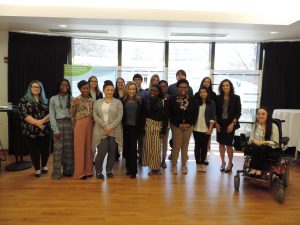Final Reflection
Balance
One thing that we learned from this experience is the importance of balance. Our learning community project that the four of us, hereafter referred to as a Professional Learning Community (PLC), jointly engaged in during the spring 2018 semester comprised of an online cohort of 15 students. We fleshed out this idea over the course of fourteen months. Collectively, we decided to reserve sections for 20 seats, of 125, for both Psychology of Adolescence and Cross-Cultural Psychology and for 10 seats, of 99 or 77, in either Quantitative Methods or Research Methods, respectively. Additionally, we created an Integrative Learning in Psychology course which consisted of solely the learning community students. Initially, each faculty member was charged with leading five students; however, we experienced some attrition over the course of the semester impacting three of the four groups. The small faculty-to-student ratio provided a rich experience for all as both the faculty and the students mutually benefitted from the opportunity of mentorship. It also enabled us to scaffold writing assignments and provide formative feedback. Two of the PLC were also the students’ faculty advisors and the other two served as the primary faculty teaching the online methods courses, both of which are required for the psychology major—with the Research Methods course being the writing intensive course finalizing the Old Dominion University writing requirement. Additionally, one of the PLC served as the faculty advisor for Psi Chi, the International Honor Society for Psychology, and regularly encouraged the learning community students’ affiliation and participation.
These High-Impact Practices (HIPs) afforded the online students in this cohort the opportunity to collaborate with one another, interact regularly with faculty, and engage in research as they worked together in groups to complete a research project which culminated in a Department of Psychology poster presentation. This experience was certainly the most rewarding for all of us. To provide context: our PLC met bi-monthly in the fall, and weekly during the spring, to accomplish the objectives that we set at the outset while we simultaneously taught other large enrollment online courses, advised, and served on multiple committees. This serves to emphasize that HIPs can, in fact, be incorporated into the online course format. Balance is critical to doing so successfully, however. We team taught varying components of the course and each assumed certain tasks and roles. We all had to adjust to one another’s teaching styles and ways of doing things but we did so complementarily. We exchanged best practices, formed a support system, and honed our instructional skills resultantly. Our PLC also served as a model to our students for how to effectively accomplish a group project. Congruently, we employed the assistance of peer mentors and graduate teaching assistants, who also served as models, for additional instructional support and individualized student attention.
In addition to the final research paper, the learning community students were responsible for writing journal assignments and for constructing an ePortfolio in Word Press. These writing assignments, conjointly, aligned with the Improving Disciplinary Writing (IDW) Student Learning Outcomes (SLOs) as illustrated via the IDW Alignment page. The group research paper was divided up into sections that the students worked on all semester. The students also wrote 10 journals over the course of the semester, two of which they incorporated into their ePortfolios. The other components of their ePortfolios consisted of reflections on how their methods skills developed over the semester, provided opportunities for integration between core course content, and a final reflection on their learning community experience and on what they learned in the course.
Another aspect that was effective about our PLC is that we created a space during our meetings whereby we routinely shared our reflections on how things were going in each of our individual groups, in the learning community collectively, and across all of our courses. We deducted that the attrition issue was due to the stage in college that the students in our learning community shared. For the majority, they were first-semester transfer students who had never taken, or seldom taken, an online course. The common denominator was that they did not have a realistic appraisal of the time required to be successful in online courses. Going forward, we would offer this experience in a hybrid format. The interactions that we shared during the poster presentation illustrated that having scheduled synchronized meetings would likely have further optimized students’ learning experiences. Overall, this was a positive collaboration. It is likely that our department will continue to explore learning communities in the future, though it probably will not entail registration across four courses, rather, something on a smaller scale in the interest of balance.
